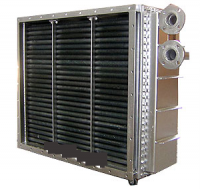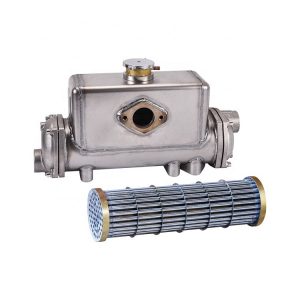The History of Heat Exchangers
The story of heat exchangers could be a fascinating travel through time, marked by brilliant developments and innovative progressions. From ancient concepts to the advanced systems we utilize today, let’s investigate the history of heat exchangers:
Ancient Innovations:
- The most punctual shapes of heat exchange can be followed back to antiquated civilizations. For case, the Romans utilized a hypocaust system, where hot air from a heater was circulated through the dividers and beneath the floors of buildings for heating.
Earliest Recorded Heat Exchanger:
- The concept of a heat exchanger, as we get it it nowadays, is regularly credited to French physicist and build Denis Papin. Within the 17th century, he portrayed a “digester” that utilized a copper vessel with a tight-fitting cover and a steam valve. This gadget permitted for productive heating and cooking.
Steam Engines and Condensers:
- Within the 18th century, the Industrial Transformation saw the far reaching utilize of steam motors. Advancements in heat exchangers became basic for progressing motor productivity. James Watt’s enhancements to the steam motor included a isolated condenser, a significant heat exchanger component.
Shell and Tube Heat Exchangers:
- The 19th century seen the improvement of the shell and tube heat exchanger, a plan that remains broadly utilized nowadays. The innovation is regularly credited to the French design Sebastien Seguin. This plan permitted for proficient warm exchange between liquids and became principal in different industrial forms.
Plate Heat Exchangers:
- The 20th century brought advance developments, including the improvement of plate heat exchangers. Dr. Richard Seligman, an American chemical design, licensed the primary plate heat exchanger in 1923. This plan presented compactness and effectiveness, revolutionizing heat trade in different businesses.
Air Conditioning and Refrigeration:
- The mid-20th century saw headways in air conditioning and refrigeration systems, driving the request for proficient heat exchangers. Finned-tube heat exchangers became prevalent in cooling applications, upgrading the exchange of heat between air and refrigerants.
Advancements in Materials and Manufacturing:
- With headways in metallurgy and fabricating procedures, heat exchangers started to be developed from a variety of materials, counting aluminum, stainless steel, and alloys. This allowed for progressed erosion resistance and upgraded heat transfer capabilities.
Compact Heat Exchangers:
- The latter portion of the 20th century and the early 21st century seen the rise of compact heat exchangers, which incorporate plans like plate-fin and microchannel heat exchangers. These plans offer expanded productivity and are broadly utilized in applications where space and weight considerations are crucial.
Environmental Considerations:
- In later decades, there has been a developing accentuation on naturally inviting heat exchanger plans. This incorporates the utilize of eco-friendly refrigerants and a center on energy effectiveness to diminish the environmental impact of thermal forms.
Integration in Renewable Energy Systems:
- Heat exchangers have gotten to be fundamentally components in renewable energy systems, playing a significant part in advances such as solar thermal collectors and geothermal heat pumps.
The history of heat exchangers may be a confirmation to human ingenuity and the persistent journey for more productive and maintainable innovations. From old concepts to the cutting-edge plans of nowadays, heat exchangers have advanced to meet the assorted needs of businesses, giving crucial arrangements for heating, cooling, and energy transfer.


